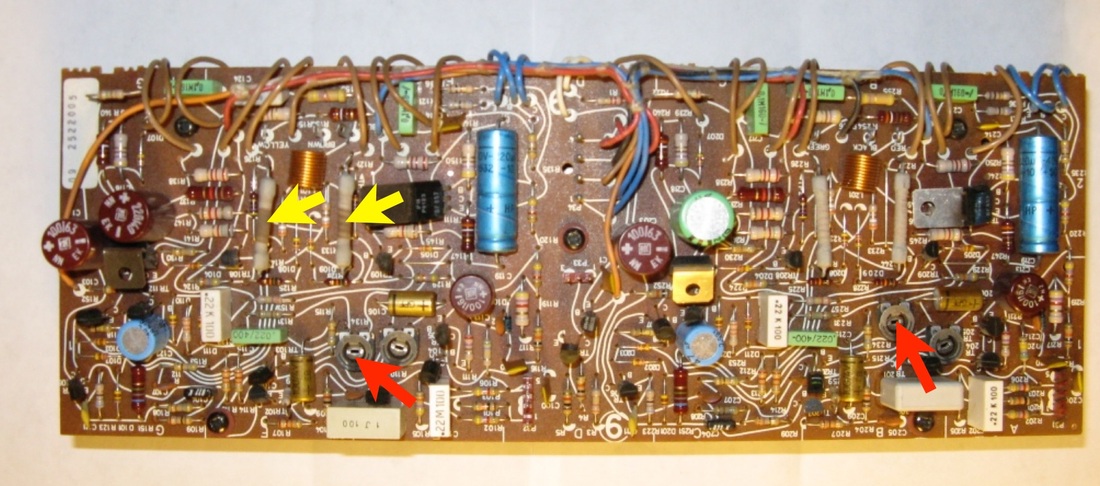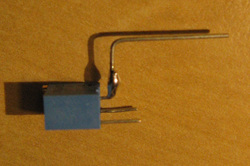Beomaster 6000 Repair: Output Stages
|
In a similar fashion as in the Beomaster 8000, the DC bias of the output transistors of the Beomaster 6000 is adjusted via a trimmer potentiometer. After more than 30 years of service these trimmers often fail due to corrosion and/or oxidation. Fig.1 shows the relevant section of the circuit diagram. The trimmer (R134) is shown underlaid orange. It is fed a constant current via TR111/IC101. Hence, the larger the resistance of the trimmer, the higher the base-emitter voltage of the Darlington transistors IC103 and IC104. The Beomaster 6000 output is operated as class AB amplifier, i.e. R134 needs to be adjusted to just turn on the transistors enabling the amplification of slightly more than a half-wave in each of the npn and pnp stages. As R134 is increased the voltage drop across R134 and R131 increases pulling the base of IC103 higher and the base of IC104 lower, which increases the current flow in their collector-emitter paths. This in turn reduces the voltage drop across IC103 and 104, which pulls the emitter of IC 102 lower and the emitter of IC105 higher, while their bases remain static. The result is that they open up in tandem with 103/104. It is obvious that a high resistance (or open circuit) in R134 will cause an almost-short circuit between the ±50V rails, only limited by the residual on-resistance of the Darlington transistors (~0.2 Ohm at 10 Amp) and R144 and R143. The resulting current can briefly exceed 100 Amps, exceeding the 15 Amp peak-current rating of the Darlingtons. The main fuse is too slow to protect the transistors, i.e. swift 'burn out' ensues, and the transistors need to be replaced. When this happens R143/4 usually show brown burn marks due to their brief overheating (yellow arrows in Fig.2). The trimmers that need to be replaced are indicated by red arrows. I recommend to replace them with 12-turn encapsulated precision trimmers. This will ensure long-term stability and trouble free operation for many years to come. Fig. 3 shows typical 12-turn trimmers modified with an extended lead for the swiper contact to fit the footprint of the original trimmer.
|
|



